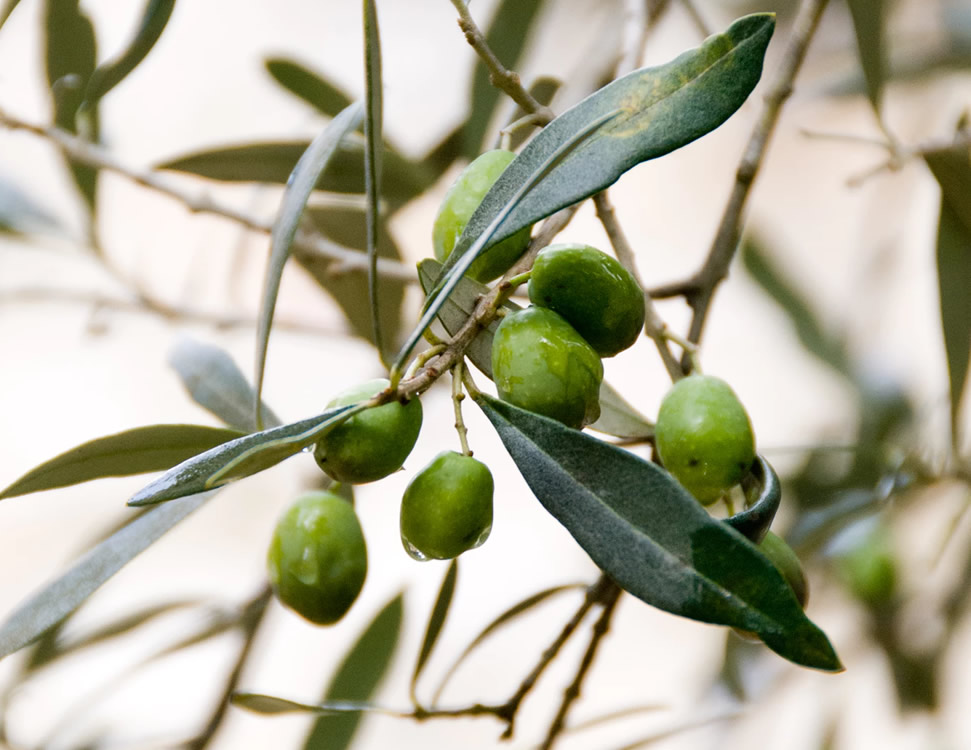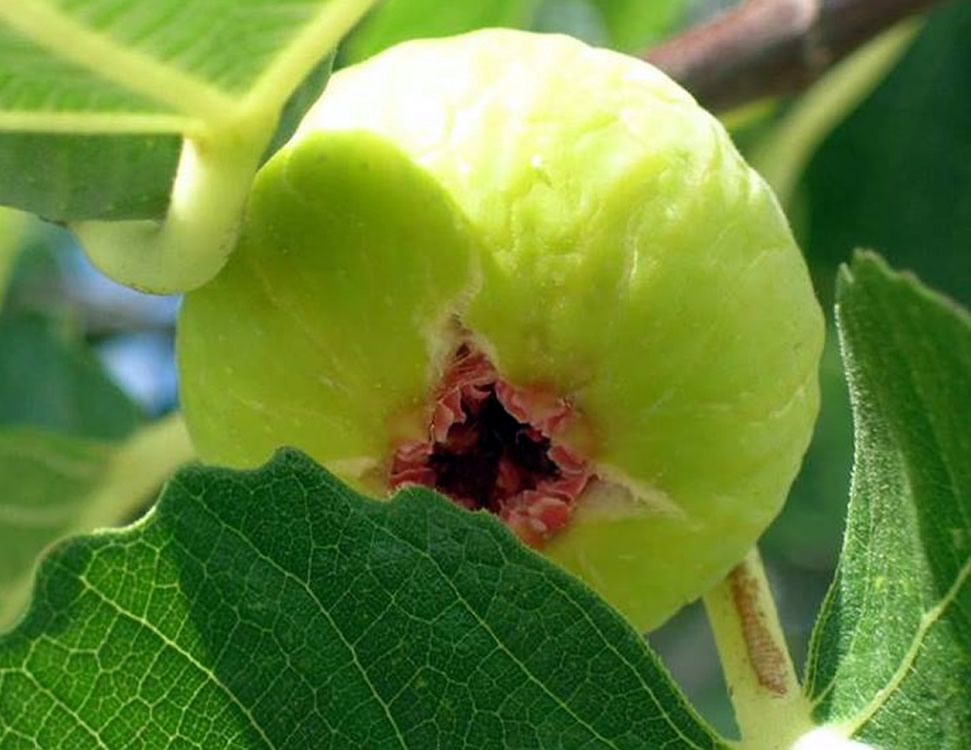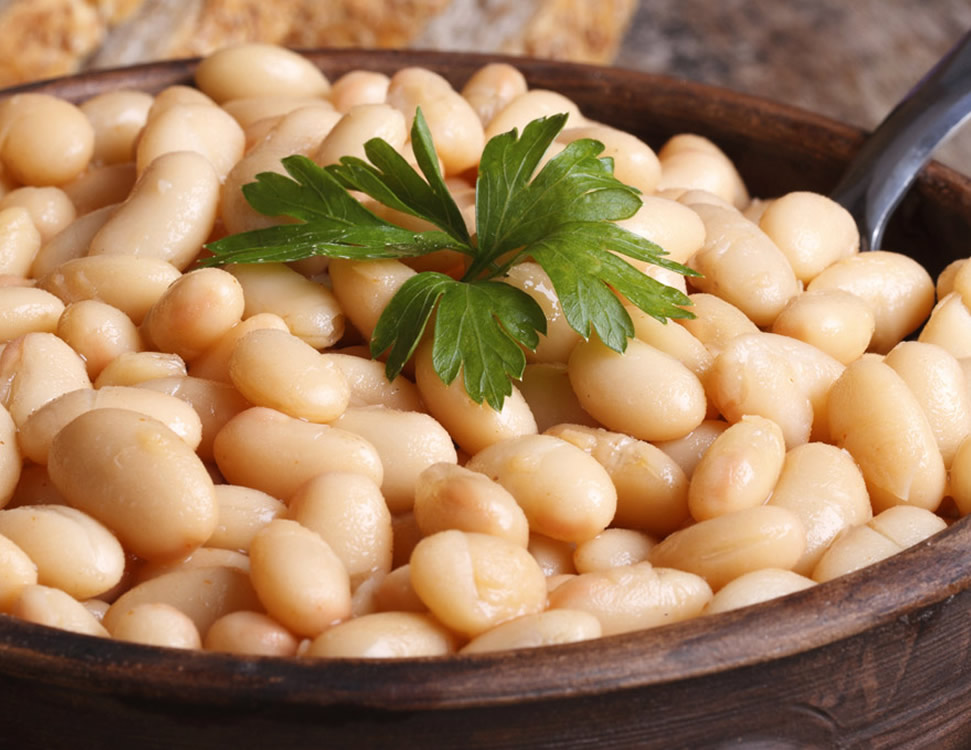Walking to discover the Cilento!
Within 1 hour any distance between S. Maria di Castellabate and any other point within Cilento is covered with maximum freedom of movement for day trips.
Together with expert guides (which we can advise you!) or on your own, Cilento reveals its thousand faces and tells a story made of legends, mysteries and ancestral traditions.
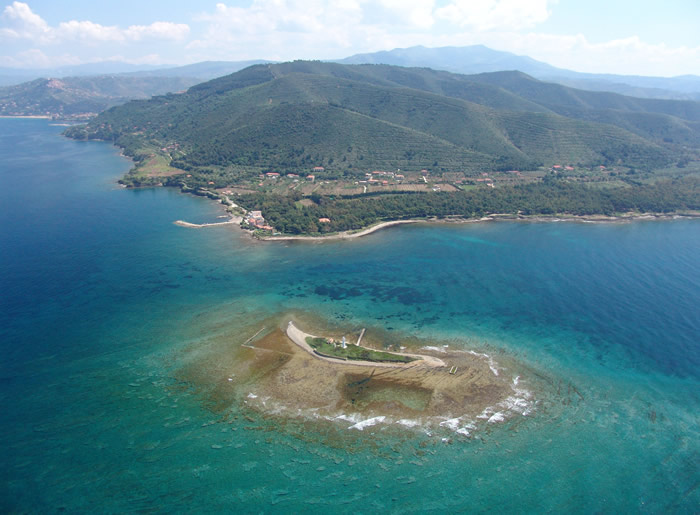
Cilento
Cilento is one of the most beautiful areas of Campania that is worth visiting for both the landscape of the interior part and the coast. Included entirely in the province of Salerno, it boasts numerous places of great tourist interest. Due to its splendid nature, since 1991 Cilento has become a protected naturalistic oasis (Cilento, Vallo di Diano and Alburni National Park), included in the UNESCO World Heritage List, which is joined by the two marine areas of Punta Licosa and Punta Infreschi. In these places the Magna Grecia meets the Mediterranean diet, the ancient myths intertwine with the modern ones, the blue of the sky merges with that of the sea in a succession of splendid scenic views.
Castellabate
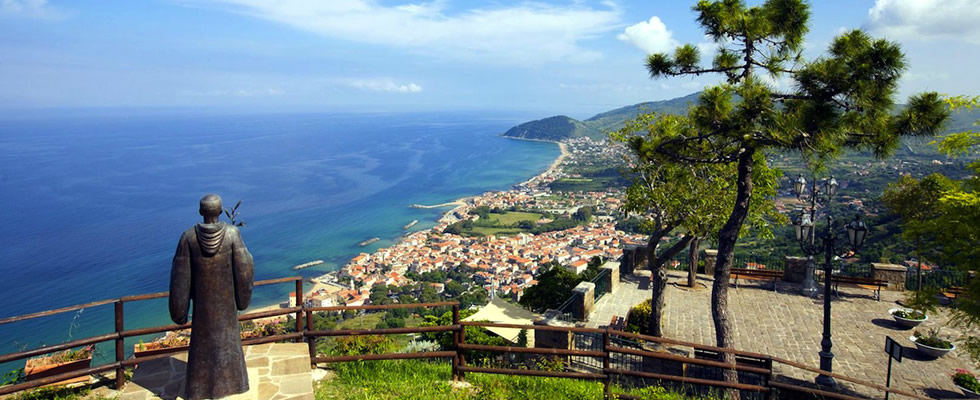
The town of Castellabate is located on a hill overlooking the wide coastal strip between Punta Licosa and the Tresino Promontory. The name of the town recalls that the fortified village was built on the initiative of the abbot of Cava de ‘Tirreni, Costabile Gentilcore, who requested authorization from the sovereign in 1123, to defend the important commercial ports of Licosa, San Marco and Santa Maria from pirate attacks.
Castellabate, one of the most beautiful towns in Italy, preserves the charm of the medieval village. Its historical center, recognized by UNESCO as a World Heritage Site, is a network of narrow streets, short stairways, wide openings and extraordinary views; first of all that of the Belvedere of San Costabile that runs along the walls of the fortress overlooking the Gulf of Salerno, Ischia and Capri. Traces of the Middle Ages are also found in the Basilica of Santa Maria de Gulia, today Assunta, (12th century) with the late Romanesque bell tower. Perfectly incorporated into the urban structure, the eighteenth-century mansions and chapels bear witness to the illustrious past of the hillside village, a fief of the Sanseverino, Caracciolo and other noble families. Even in the coastal hamlets there are ancient noble buildings. Palazzo Belmonte (an ancient hunting lodge partly used as a hotel) and Villa Matarazzo mark the landscape of Santa Maria di Castellabate, an ancient fishing village and lively seaside resort that the cinematic clamor of “Benvenuti al Sud” brought to the fore (together with Castellabate). Palazzo de Angelis and Torretta, the fortified farm owned by the Granito family, are in the territory of San Marco di Castellabate, an ancient Roman settlement, today a small fishing village very popular in summer. For the rest it derives from the medieval Latin castellum, a fortified village.
Paestum
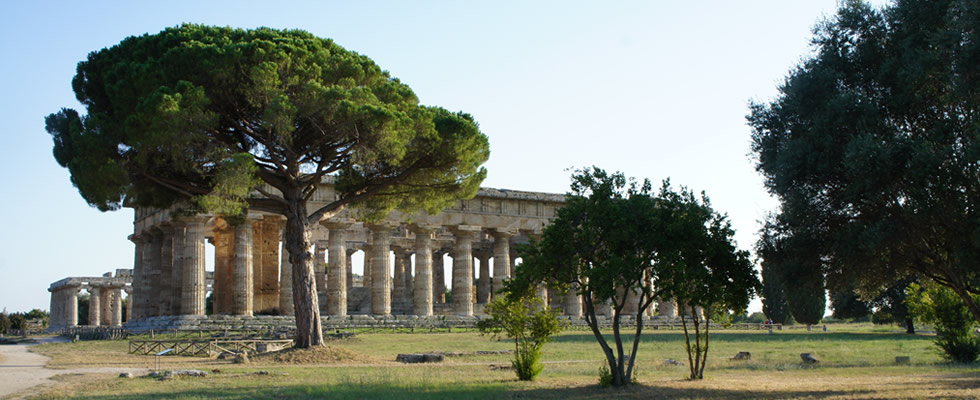
If you go on a journey to discover the areas south of Salerno you cannot miss a stop in Paestum. Founded 2500 years ago, it is one of the most important archaeological parks in Magna Graecia and Europe.
Visiting Paestum, the ancient Poseidonia, recognized among the UNESCO World Heritage Sites, means embarking on a fascinating journey through history and art, immersing yourself in the evocative atmosphere of ancient Greek and Roman culture: three Doric temples, the Temple of Hera, the Temple of Athena and the Temple of Poseidon, are splendid examples of Greek archeology comparable in beauty only to the Partendone of Athens.
Also worth a visit is the Archaeological Museum which exhibits numerous artifacts found in the area, including the famous paintings such as the Tomb of the Diver, one of the few surviving examples of classical painting.
Velia
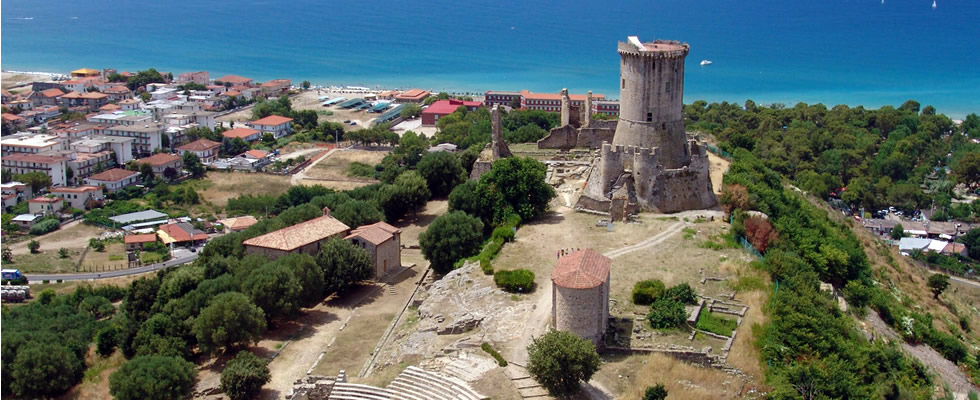
Velia, was an important city of Magna Graecia founded around 540 BC from exiles of Phocaea on the top of a promontory. The archaeological area of Velia dates back to the 5th centuryB. C., the city was known for its flourishing businesses and above all, for the Eleatic philosophical school founded by Parmenides and Zeno. In Roman times, it experienced a period of great development until the gradual silting up of the two ports built by the focei and the catastrophic floods decreed the end of its economic power. In the Middle Ages the town withdrew to the acropolis where a castle was built with a lookout tower and later, during the seventeenth century, the city was gradually abandoned.
The archaeological area of Elea-Velia, declared a UNESCO World Heritage Site, extends over a picturesque promontory where Elea stood, one of the most beautiful cities of Magna Graecia, and can be visited entirely in the archaeological park.
Pioppi
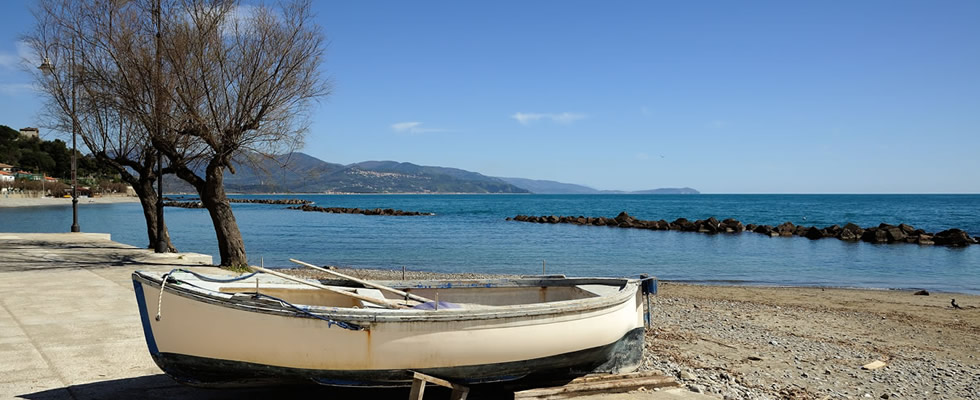
Pioppi is a town in the Cilento Vallo di Diano and Alburni National Park, a marine village in the municipality of Pollica. Today Pioppi boasts the presence of important and illustrious guests of world importance, such as the physiologists Ancel Keys and Martti Karvonen and the cardiologist Jeremiah Stamler, linked by common interests in research on the interaction between diets and cardiovascular diseases. Ancel Keys, in particular, for the studies carried out on the eating habits of the inhabitants of the municipality, is unanimously recognized as a theorist of the Mediterranean Diet. The town is also mentioned by numerous writers, including the English traveler Arthur John Strutt (“Passing through the Cilento”, 1831) and Giuseppe Ungaretti (“Journey to the South”).
To visit is the Castello Vinciprova, a building that was built in the 18th century by the Ripoli family, originally from Pollica, coming from Spain. According to some news, the palace was sold by Ripoli for gambling debts, of one night. Recently the castle was donated by the last representatives of the Vinciprova to the Municipality of Pollica, which turned it into a Museum of the Sea.
The Church of the Carmine: dedicated to the Madonna del Carmine, was founded in the early seventeenth century. It immediately became a center of worship, because a painting of the Madonna, which was venerated there, was considered miraculous. The influx of pilgrims determined the rise of a fair to coincide with the July 16th festival. The church, severely damaged by the 1980 earthquake, has been reopened for some years ago.
Nature
Nature preserves all its beauty in the Cilento area. The famous Cilento National Park – Vallo di Diano and Alburni and, for those who prefer the sea, the beautiful Marine Protected Area of Santa Maria di Castellabate, which includes Punta Licosa and Punta Tresino and, the evocative Costa degli Infreschi and Massetta, are unmissable destinations.
The Cilento National Park – Vallo di Diano and Alburni is the largest Park Area in Europe. It includes 80 Municipalities and covers an area of approximately 181,000 hectares, completed by around 9,000 hectares of sea surface. In the territory there are about 2000 species of native spontaneous plants, among which the Park symbol stands out: “La Primula Palinuri Petagna“. Since 1997 it has been a Biosphere Reserve and since 2010 it is the first Italian National Park to become a Geopark.
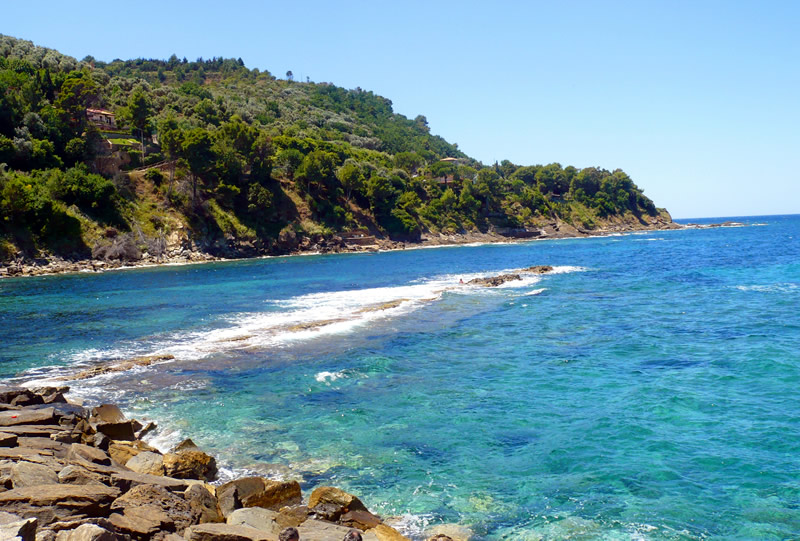
Protected marine area
of Santa Maria di Castellabate
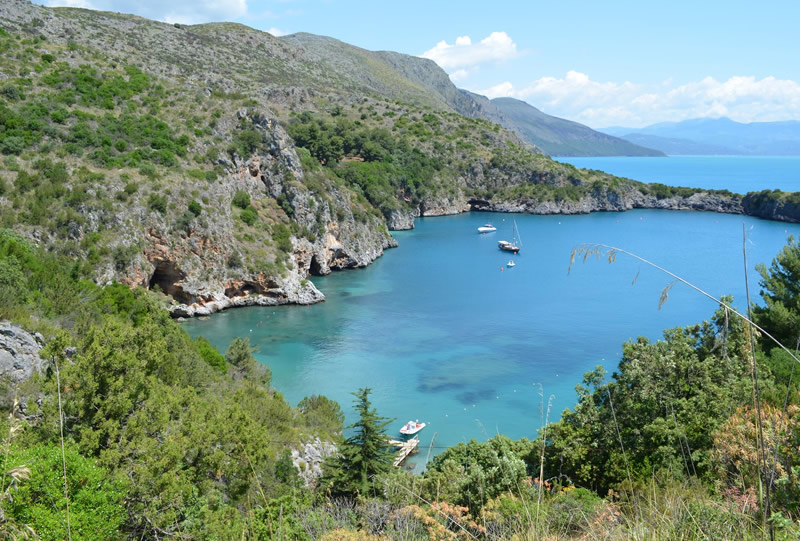
Costa degli Infreschi
e della Masseta
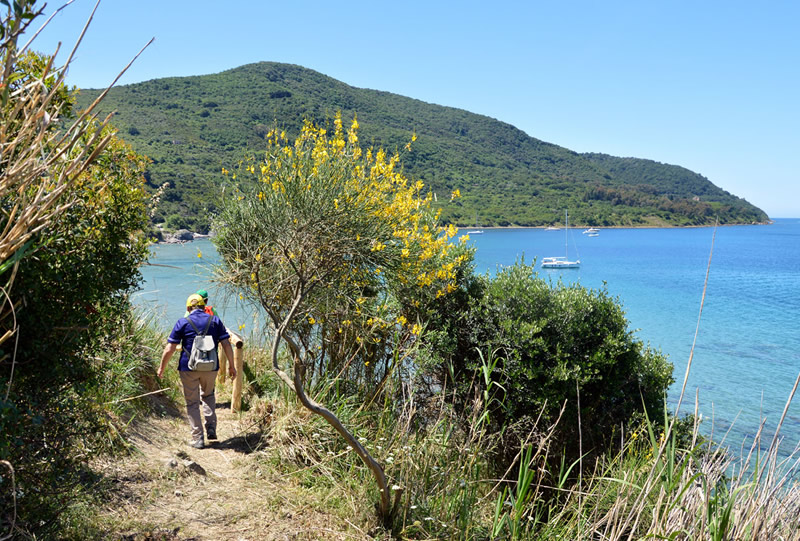
The Trezeni path
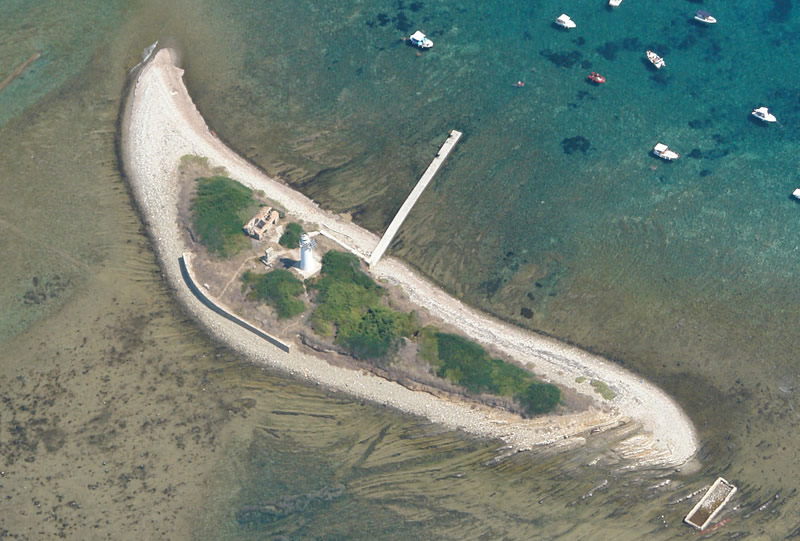
The path of Punta Licosa
Magical is the Cilentan coast between Punta Licosa and Ogliastro, here a narrow path runs along the sea, with shaded stretches, and connects the two villages through enchanting places such as Punta della Scala and Torre di Mezzo, but the most loved and popular trekking route known is the one that starts from San Marco di Castellabate and reaches Punta Licosa. During this spectacular itinerary there are panoramic views over the Bay of Castellabate and Punta Tresino, and it is possible to admire the Amalfi Coast and even the island of Capri on the horizon. The path crosses woods and Mediterranean maquis, with aromas of Aleppo pines, myrtles, mastic trees and carob trees as well as coves and beaches. With a little luck it is possible to spot magpies, blackbirds and seagulls. Finally, the culmination of the walk is the view of the mythological island of Licosa.
Adventure
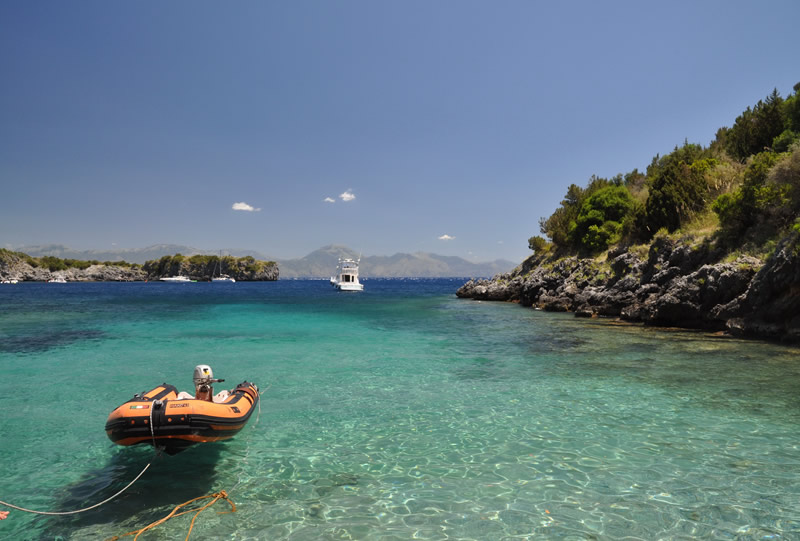
Boat excursions
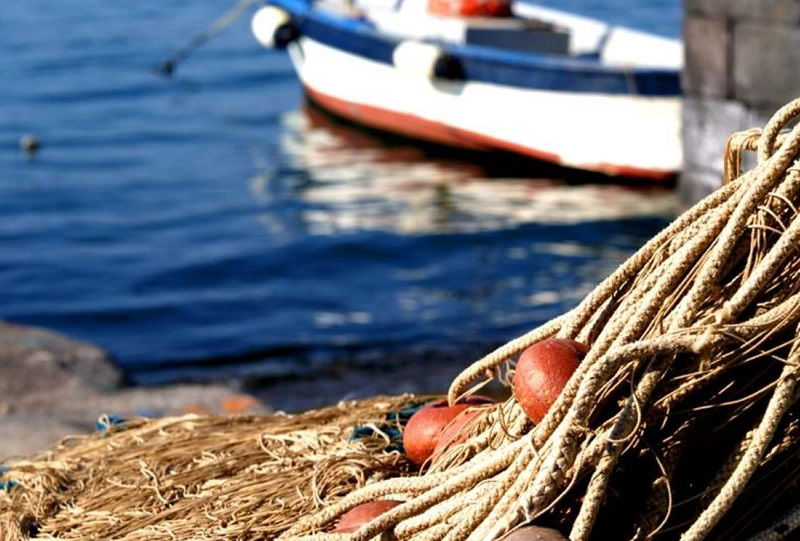
Fishing
Moreover, Fishing Tourism allows you to discover the charm of a figure that has been able to renew itself over time; and to spend a day in a different way, between surprises and fun; to eat very fresh fish, cooked according to the recipes of the best Italian regional tradition.
The Via Silente
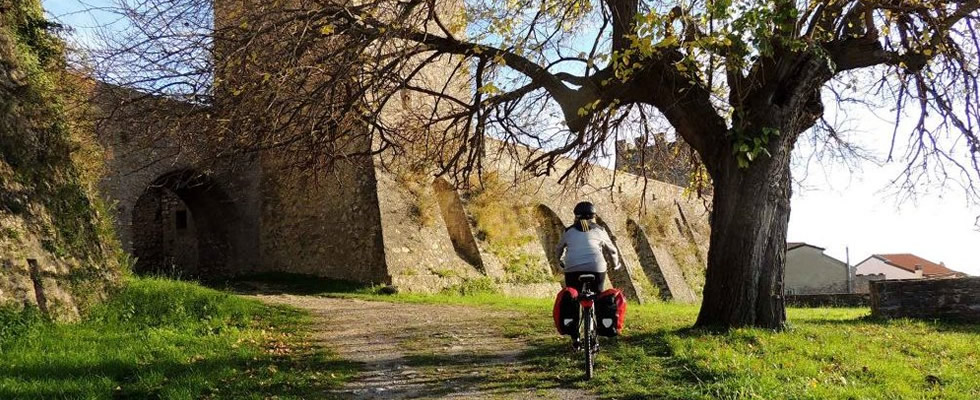
This is a wonderful path that in just under 600 km, divided into 15 stages and crosses the entire territory of the Cilento, Vallo di Diano and Alburni National Park. The Via Silente owes its name to the sonorities of the places crossed, in which silence settles powerfully, neutralizing almost entirely the annoying noises of human activities.
In fact, in Via Dumbledore you enjoy time, to feel reality with all your senses, to discover that Silence that is not the absence of sounds but the quality of listening.
All without ever forgetting the harshness of a territory in which Nature has always been the master. The route starts from the village of Castelnuovo Cilento, a few kilometers from the railway station of Vallo della Lucania – Castelnuovo.
The first hilly stretch, very scenic, soon returns to the coast near Pioppi, a small fishing village; from here the road follows the coast line for about forty kilometers and then advances towards the interior going up again, with no small effort, towards the village of Castellabate.
It will take about four hundred kilometers before the traveller sees the sea again, but in the meantime he will have crossed a wonderful land, he will have bathed in the clear waters of the Calore River, he will have enjoyed the enchanting charm of the caves of Castelcivita and Pertosa, he will have reached plateaus, beech forests, valleys dotted with orchids, charming peasant villages. His time on the Via Silente will have been magical even if not without difficulties.
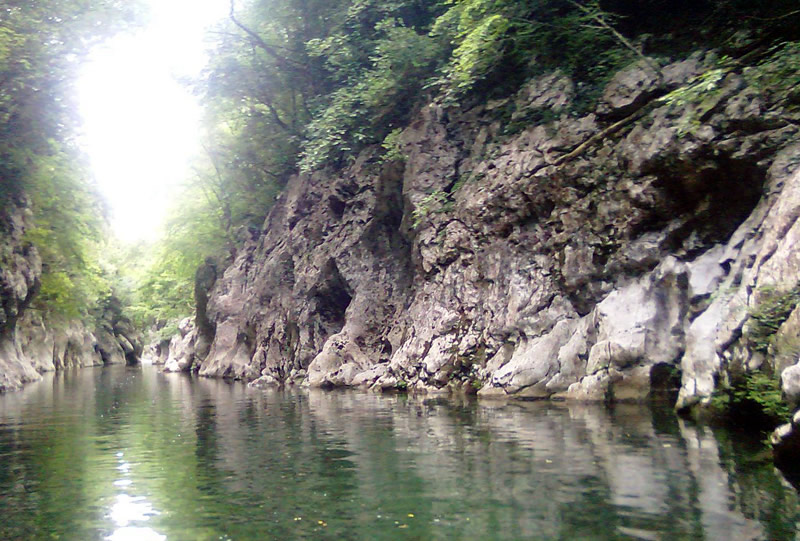
EXCURSIONS
TO THE HEAT GORGES
The Calore river forms five gorges and / or valleys on the way from Monte Cervati to the sea, but the most evocative is situated in the area between Felitto and Magliano, a few kilometers from the town of Castelcivita, where a cave is developed 4,800 meters long with a depth of 52 meters. Here for trekking enthusiasts a fairly easy nature trail opens, lasting about 6 hours at a drop of about 200 meters. We are in the "kingdom" of the otter, which lives here undisturbed, free and protected. The undergrowth rich in shrubby vegetation almost recalls a tropical forest.
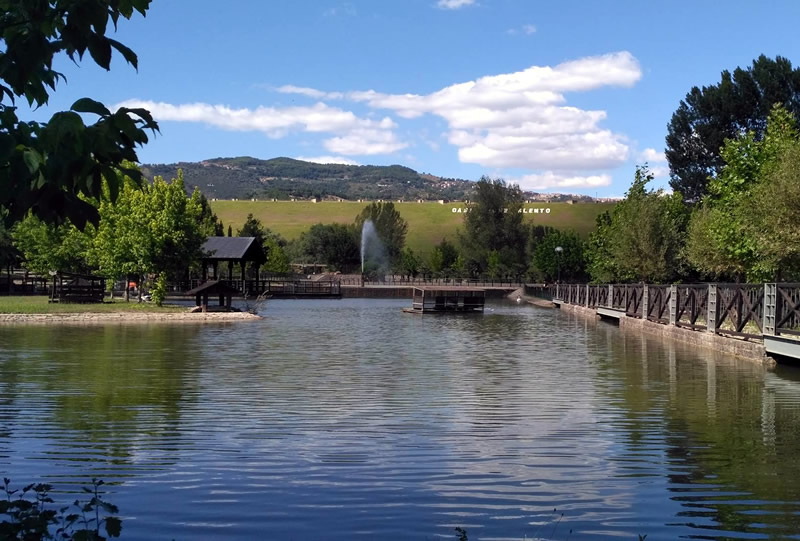
EXCURSIONS
TO THE ALENTO RIVER OASIS
It is available to guests: guided tours, naturalistic excursions on horseback and by bike, with electric cars and buses, educational workshops, boat trips on the lake, botanical garden, picnic area with barbecue, two bars, football fields and volleyball, area for thematic exhibitions and banqueting, a shop with typical products, archery, sailing, trekking paths, birdwatching huts, bike and mountain bike rental, playground and congress center.
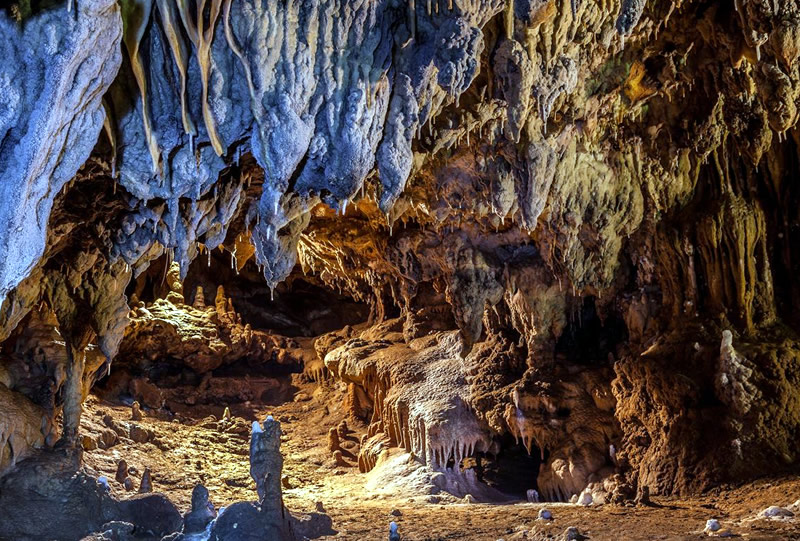
EXCURSIONS
TO THE CAVES OF CASTELCIVITA
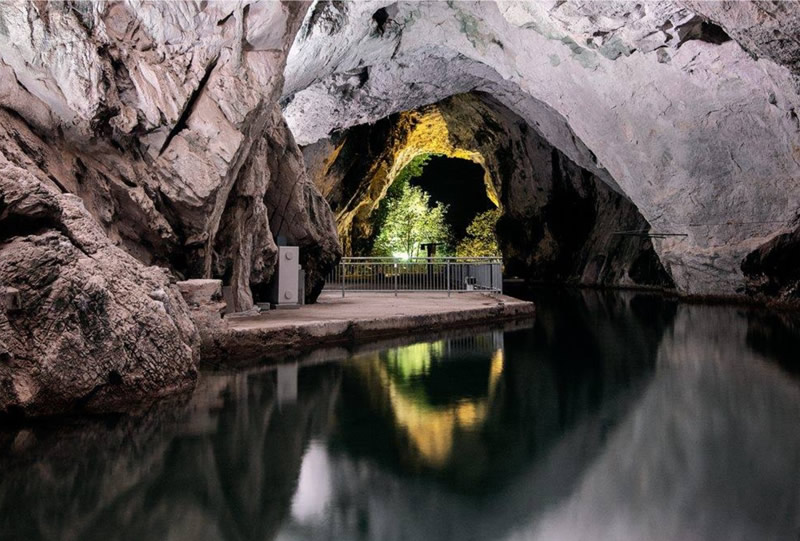
EXCURSIONS
TO THE CAVES OF PERTOSA
The Pertosa-Auletta Caves are made up of three almost parallel branches of which the northernmost has the tourist route, while the other two, the median and the southernmost, constitute the most markedly speleological hypogeum sectors. The southernmost branch, called Ramo della Sorgente, is crossed throughout its development by a perennial waterway, the Negro River, which emerges on the surface from the entrance of the cave. Here a dam, built for the exploitation of the stream for hydroelectric purposes, has meant that its level has risen to such an extent as to require the use of boats to access the innermost cavity. The name Negro comes from the Latin "niger" which means dark, dark precisely from its underground origin. This river originates from a small siphon called "polla", as the water comes out under pressure giving the impression of boiling water. The water flow of the water course, depending on the season, fluctuates between 350 and 600 liters per second. Hydrological research carried out over the last decade has shown that this torrent derives at least in part from a superficial "loss" of the Tanagro river, although the origin of the greater water supply is still completely unknown and perhaps it is to be correlated to the underground water circulation of the nearby Alburni Mountains.
Cilento
in volo
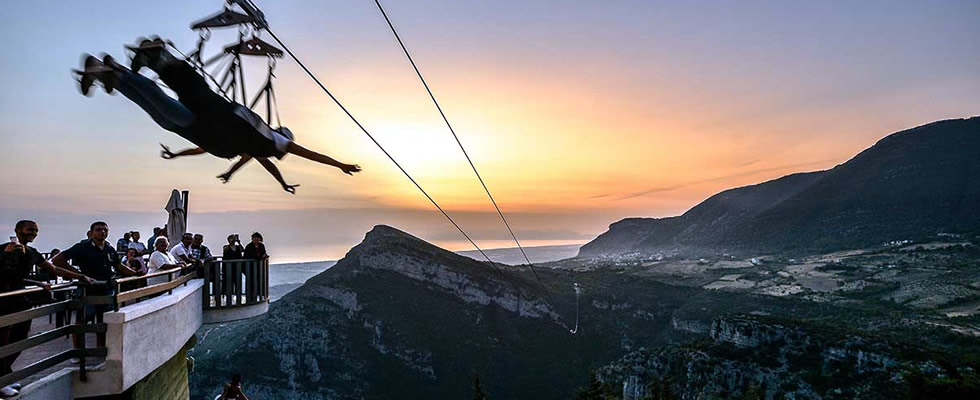
For lovers of novelties and adrenaline, in Trentinara, a small and characteristic village in the heart of Cilento, you can discover one of the most beautiful areas of southern Italy by flying. Here it is possible to take flight at over 500 meters high, admiring sunsets and 360-degree panoramas where you can contemplate the Gulf of Salerno, Amalfi Coast, Capri Island, the archaeological area and the splendid waters of the sea of Paestum and the Amalfi Coast.
Food and wine
The discovery of the Mediterranean diet dates back to 1945 and can be attributed to the American doctor epidemiologist and physiologist Ancel Keys who landed in Salerno with the American contingent. Keys ascertained the longevity of the populations that lived in the Mediterranean, if compared to those of the whole world, and attributed this circumstance to the food of these lands. In particular to the typical products of Cilento. In fact, Cilento was the place where the American doctor settled for some time. During his stay in the region of Campania, Keys further strengthened his theses, establishing how those products – of which the population fed themselves – , played a fundamental role in contributing to longer life.
The main products of the Mediterranean diet are fruit, vegetables, cereals and legumes in large quantities. These are countered by a moderate use of dairy products, white meat and eggs. Instead, red meat and wine should be avoided. The only contribution of fat is allowed through the use of olive oil, which would be preferable if it were extra virgin.
TYPICAL PRODUCTS OF CILENTO
And it is precisely in the Cilento that we find some of the most famous legumes of Italy: the Controne bean and the Cicerale chickpea. Controne bean is one of the DOP products. It is small, round and white, and particularly digestible. The Cicerale chickpea stands out for its round grains, with a slightly more golden color than the common ones, with light hazelnut nuances, and an intense flavor. Due to its low moisture content, it can be stored for a long time and tends to swell considerably during cooking.
On the other hand, vegetables include the round artichoke of Paestum, typical of Battipaglia and the succulent Vatolla onion.
Another typical product of Cilento is the famous white fig, which owes its name to the light yellow uniform color of the peel of dried fruits which becomes brownish for the fruits that have undergone a baking process. The pulp has a typically pasty consistency, with a very sweet, amber-yellow taste. The white fig is considered the “Bianco del Cilento”, and is a product with the DOP brand.
Among the typical fish products of the Cilento area stand out the anchovies of menaica, so called in reference to an ancient fishing technique for which a type of net is used, the menaica , which presents a mesh calibrated on the size of the fish to catch. The anchovies that are fished through this fishing are the largest specimens that are washed in brine and placed in compact layers, alternated with layers of salt in terracotta pots, and left that way for at least three months.
The product par excellence of the Cilentan territory is the Mozzarella di Bufala DOP. The term mozzarella derives from the name of the cutting operation performed to separate the dough into individual pieces. It is often referred to as the queen of Mediterranean cuisine, but also white gold or table pearl, in accordance with the prized food and taste qualities of the product.



